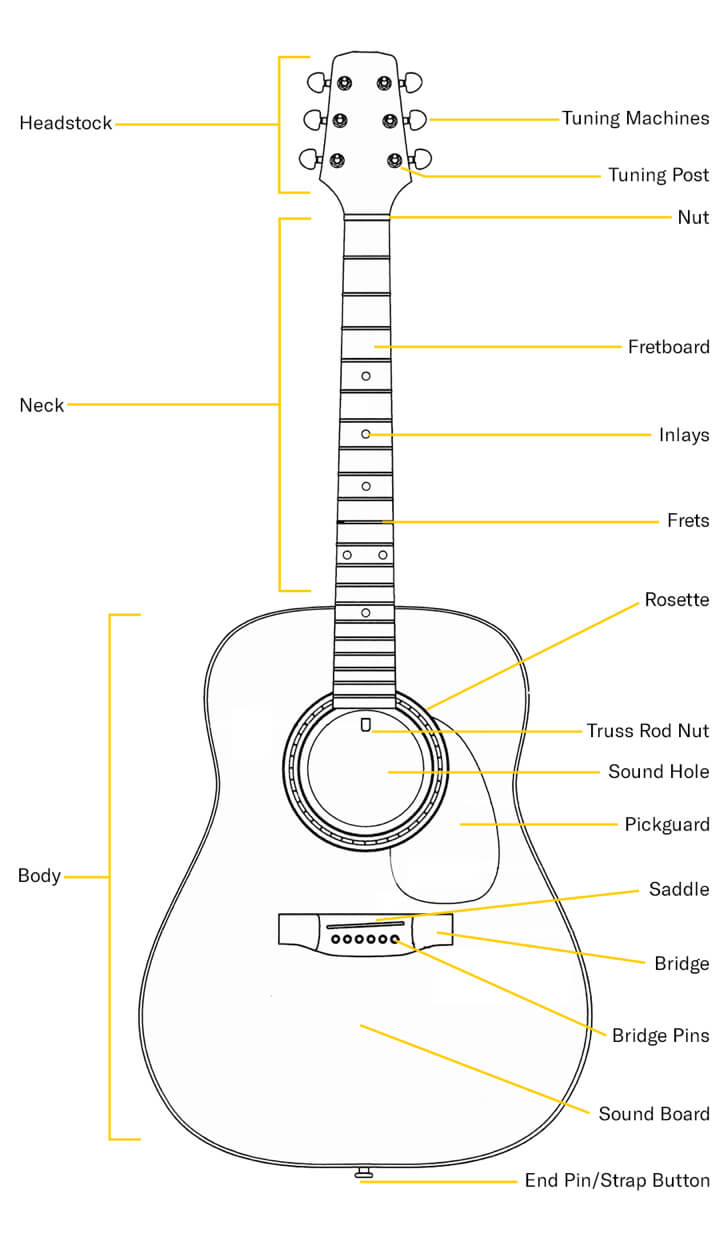ACOUSTIC GUITAR SURVIVAL GUIDE
We call it a survival guide, but it's really a bunch of tips to help you thrive. These simple pieces of advice will keep your guitar in top shape and help you to advance your playing with ease.
TUNING TIPS
Step 1:
When you replace your strings, before you tune them up, stretch them out by pulling them up and away from your fretboard. This will help the stings stretch out quicker and minimize the need to retune too many times initially.
Step 2:
Always tune up to the note from a lower pitch. It helps the string remain in tune longer.
Step 3:
Keep an accurate tuner on you to ensure accurate tuning.
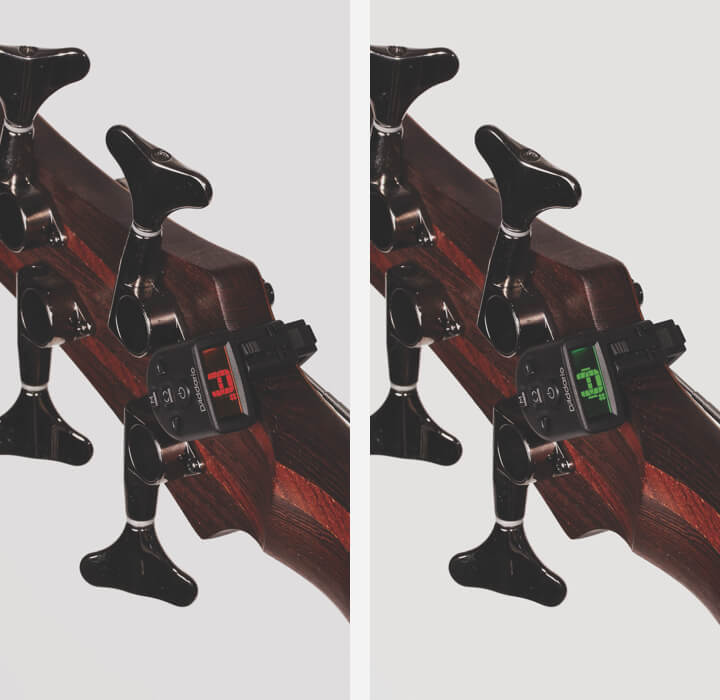
Out of Tune In Tune
Step 4:
After playing, use D'Addario XLR8 String Cleaner/Lubricant to keep your strings fresh. XLRB helps your strings last longer and reduces friction for faster playing, reduced finger noise, and enhanced tone.
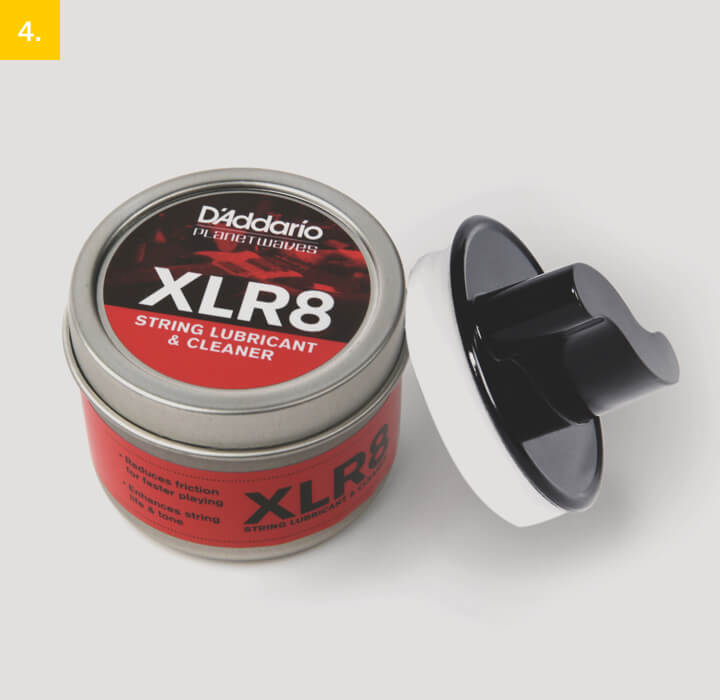
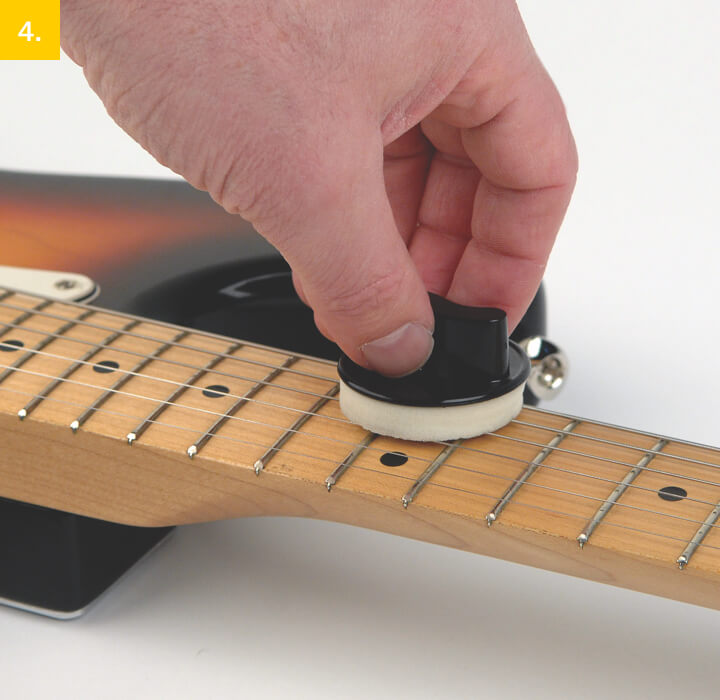
HUMIDITY TIPS
Step 1:
Use a hygrometer to measure the humidity of your instrument. Ideally you want to keep it between 45-55%. Hygrometers have some leeway in their accuracy, so if you're slightly outside that range, your instrument should be fine.
Step 2:
Keep a Humidipak or other D'Addario humidifier in your guitar or case to stabilize the humidity.
Step 3:
Watch out for warning signs of low humidity, including sharp fret ends, cracks in the wood, and separation of glue joints.
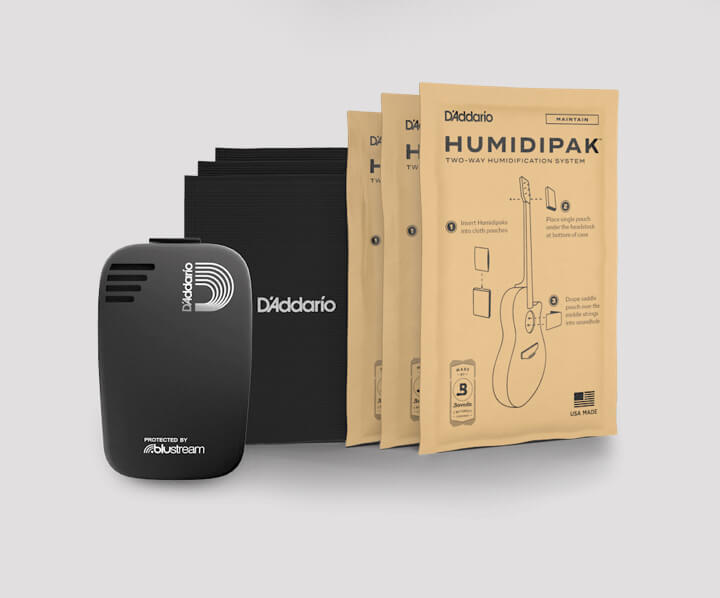
HUMIDIKIT
Humidipak / Humiditrak bundle
HIGH PERFORMANCE TIPS
Keep it Tight—It's a good idea to snug up the nuts and screws on your tuners, to minimize string slippage and maximize performance.
Bad Buzz Below—To use alternate tunings below standard pitch, be sure to have your guitar properly setup by a professional. Not doing so could lead to bad string buzz.
String Removal and Fretboard Care
Step 1:
Use a Pro-Winder to turn tuners clockwise and loosen your strings. Once loose enough, remove them from the tuning post.
Step 2:
Spray conditioner such as D'Addario Hydrate on your fretboard. Use a cloth to rub any excess dirt or grime off of it. While in some instances you can also use lemon oil, it is not okay to use it on all fretboards and in particular, should not be used on lighter woods like maple.
Step 3:
Polish the frets using Fret Polishing Paper to remove any corrosion.
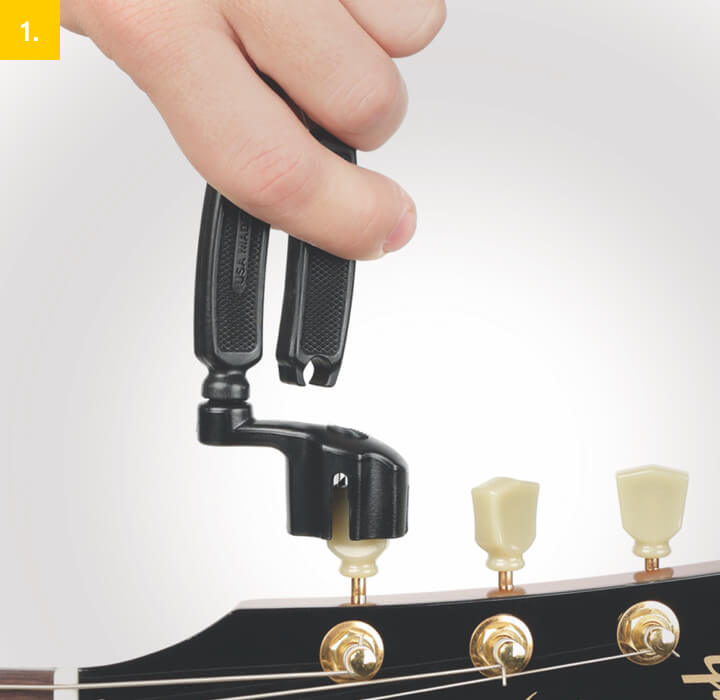
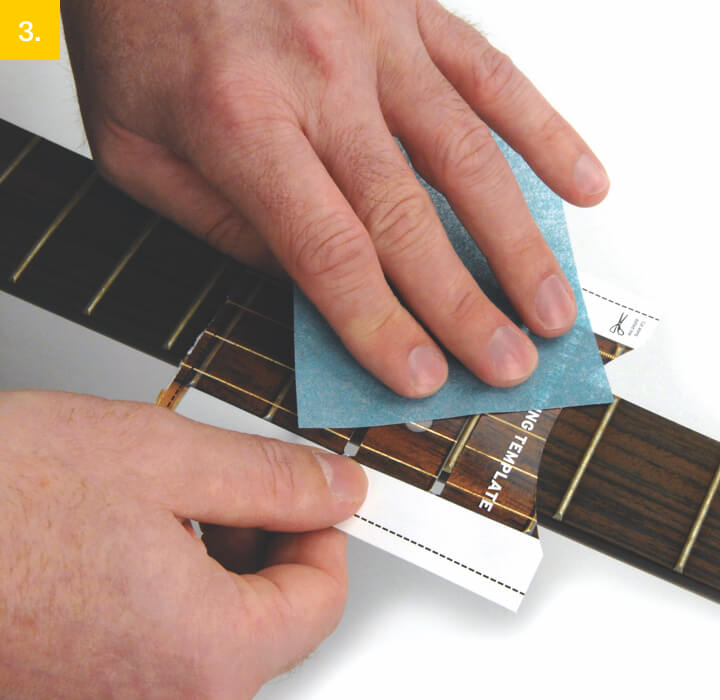
CLEANING AND POLISHING THE BODY
Step 1:
Clean your guitar's body with D'Addario Restore Detailer Deep Cleaning Polish and a cloth.
Step 2:
Apply D'Addario Protect Carnauba Wax to a microfiber cloth and polish all sides of the guitar body. Once it dries, gently remove with a polishing cloth.
Step 3:
Spray a small amount of D'Addario Shine Cleaner and Maintainer, then buff thoroughly in a circular motion to create a "wet" look.
STRING IT UP
Step 1:
Remove the bridge end pins. Insert the ball end of the string into the bridge, then push the bridge pins in over it. Gently pull on string to lock it in place.
Step 2:
Pull the opposite end of the string across the fretboard and over the nut, to the correct tuning key.
Step 3:
Gently bend the string approximately 1 - 1 1⁄2 tuning keys beyond the desired tuning key to mark the length of the string needed to secure against the tuning peg.
Step 4:
Insert the string into the key up to the bend. Turn the tuning machine counter-clockwise to wind the string onto the key. Wind the string downward and cut off the excess.
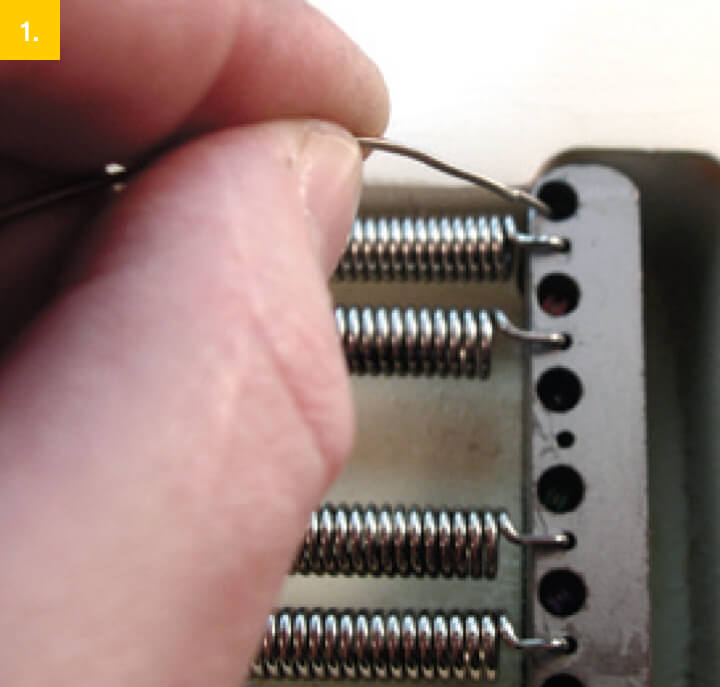
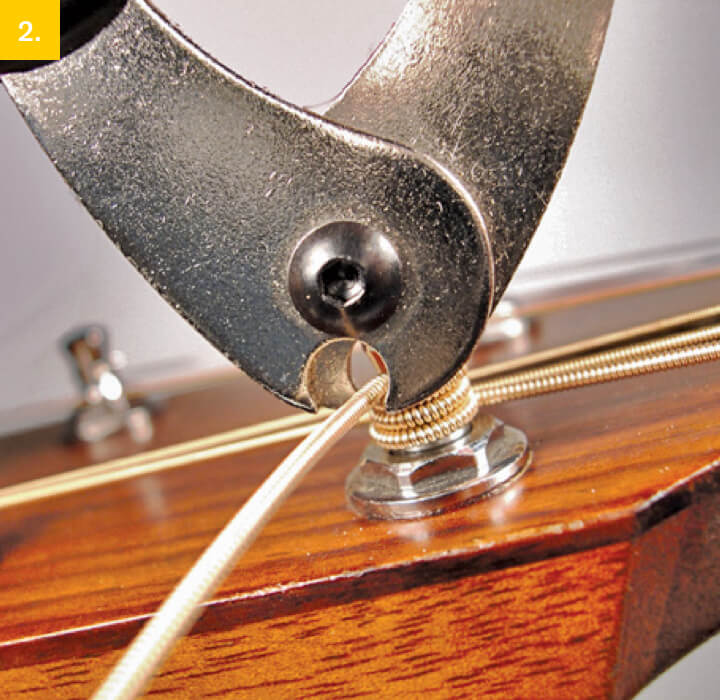
HIGH PERFORMANCE TIPS
Wrap it Right—Wrap each string three to four times around the tuning key post. Too many or too few wraps can result in tuning problems.
Swirlies—To remove swirl marks in the finish, you can buff them out using a microfiber polishing cloth and D'Addario Restore. Restore is a gentle buffing compound that works great to return a finish to that new look.
CHOOSING THE BEST STRINGS FOR ME
There are a number of important factors to consider when choosing the best strings for you. What material they're made from determines the intricacies of the tone. The gauge (or thickness) of the strings makes a difference in how easy they are to bend or how powerfully they reverberate.
The easiest, quickest, and most fun way to find the best strings for you is to check out our string Finder tool. With just a few questions, we'll match you to the perfect string set!

80/20 BRONZE
80/20 Bronze strings deliver deep bass response, sparkling, bright overtones, and maximum volume. A vintage guitar tradition.

PHOSPHOR BRONZE
Phosphor Bronze strings offer the ideal combination of warm, rich bass balanced with clear treble tones. The most popular acoustic string alloy, ideal for all guitars and playing styles.

COATED STRINGS
D'Addario XS Acoustic Phosphor Bronze strings combine our most popular acoustic alloy with our most advanced string coating technology, resulting in clear tone, smooth feel, and superior tuning stability — all with the longest possible string life.
Acoustic Guitar Anatomy
